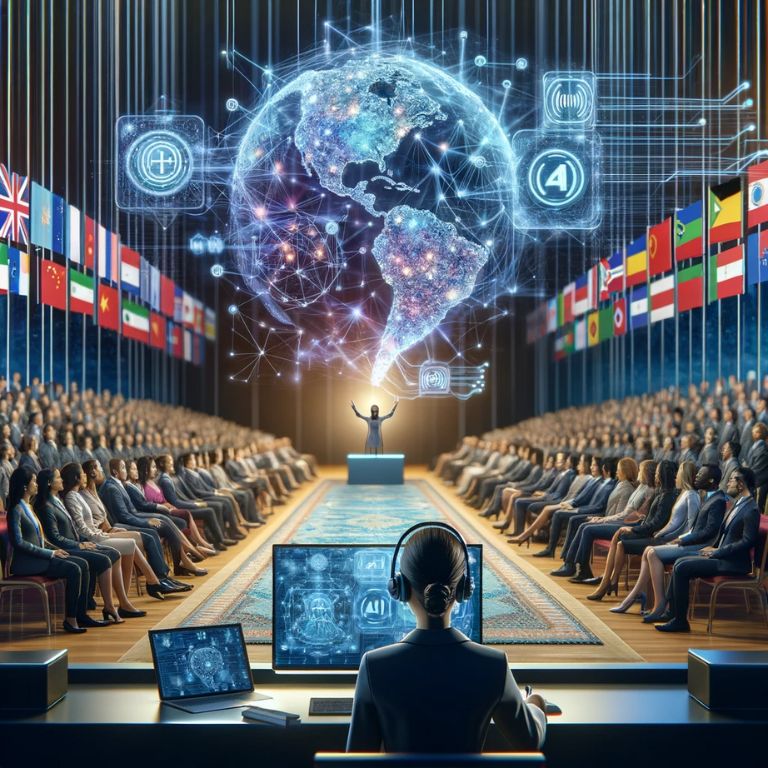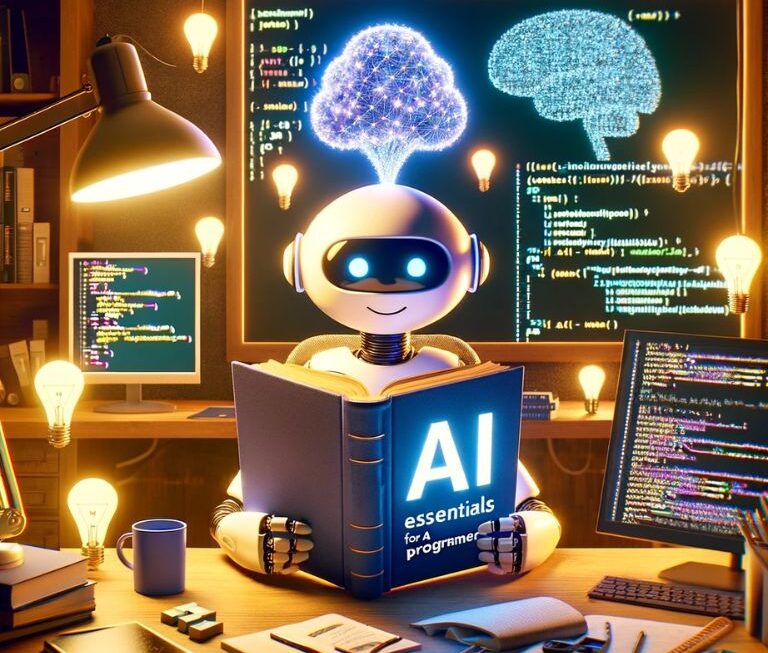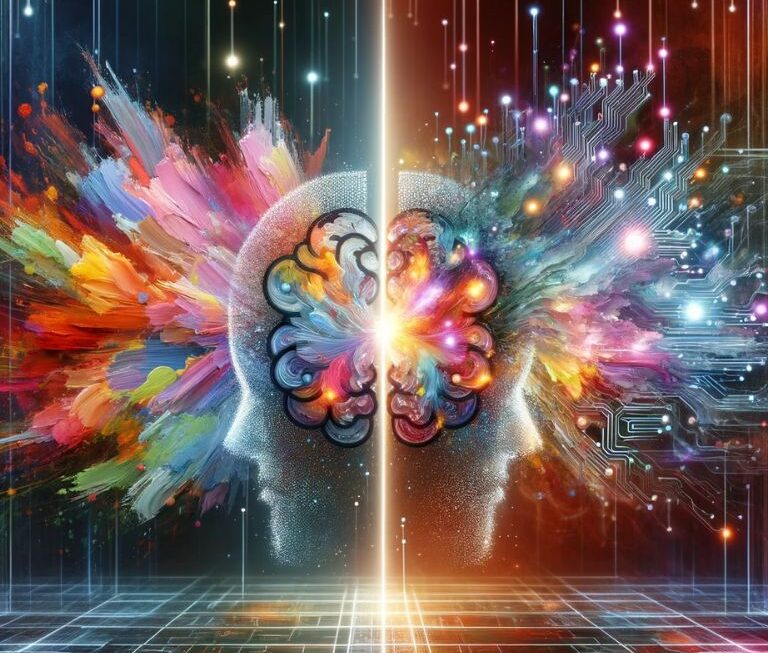In an increasingly interconnected world, the ability to communicate across language barriers is more critical than ever. Language translation and interpretation serve as vital tools in bridging these divides, enabling cultural exchange, international business, and diplomatic relations. With the advent of Artificial Intelligence (AI), these fields are undergoing a profound transformation, offering unprecedented accuracy and efficiency. This guide explores the advancements and challenges in AI-driven language translation and interpretation, highlighting how this technology is reshaping the way we communicate globally.
The Evolution of AI in Language Translation
Language translation has evolved significantly from the early days of basic word-for-word substitution to the complex, context-aware methods we see today. The journey began with manual translation, relying entirely on human expertise. The advent of computers introduced computational linguistics, but these early attempts were limited, often producing literal translations without understanding context or idioms.
The real breakthrough came with the introduction of AI and machine learning. Neural networks, a type of AI that mimics the human brain’s structure, revolutionized language translation. This technology, particularly deep learning, enabled systems to learn from vast amounts of data, understanding context, grammar, and even cultural nuances.
Key advancements in AI-driven language translation include:
- Neural Machine Translation (NMT): Unlike previous statistical methods, NMT translates entire sentences, considering context for more accurate and natural results.
- Context-Aware Translation: AI systems now consider the context surrounding text, leading to translations that are more accurate and culturally relevant.
- Automated Quality Checks: AI algorithms can now identify and correct errors in translations, enhancing quality and consistency.
Breakthrough Technologies in AI Interpretation
The world of language interpretation has been revolutionized by Artificial Intelligence (AI), offering breakthrough technologies that enable real-time, seamless communication across language barriers. These advancements go beyond simple translation; they facilitate meaningful and instantaneous exchanges between individuals who speak different languages.
Real-Time Speech Recognition
One of the key pillars of AI interpretation is real-time speech recognition. Advanced algorithms and neural networks enable the instantaneous conversion of spoken words into text. This text can then be translated into the desired language, allowing individuals to understand and respond to one another in real-time.
Real-time speech recognition technology is particularly crucial in scenarios like international conferences, business negotiations, and emergency response situations. It eliminates the need for human interpreters, saving time and resources while ensuring accuracy.
Natural Language Processing (NLP)
Natural Language Processing (NLP) is at the heart of AI interpretation. NLP algorithms have evolved to understand not just the words being spoken but also the context, tone, and nuances of language. This level of comprehension enables AI interpreters to provide translations that are not only accurate but also contextually relevant and culturally sensitive.
NLP algorithms can identify idiomatic expressions, cultural references, and colloquialisms, ensuring that the translation feels natural to the listener. This level of sophistication has made AI interpretation a valuable tool in diplomatic negotiations and cross-cultural interactions.
Multilingual and Multi-Dialect Capabilities
AI interpretation tools are not limited to a handful of languages; they can support a wide array of languages and dialects. Whether it’s a rare regional dialect or a widely spoken international language, these tools can handle diverse linguistic challenges.
Moreover, they can seamlessly switch between languages during a conversation, allowing participants to communicate in their preferred language without missing a beat. This multilingual and multi-dialect capability is a game-changer for international businesses, fostering smoother communication with clients and partners worldwide.
Learning and Adaptation
AI interpretation systems continue to improve over time through machine learning. They learn from user interactions and feedback, becoming more accurate and context-aware with each conversation. This adaptive learning process means that AI interpreters can become personalized to the users’ specific language needs and preferences.
As these systems learn and adapt, they can handle a broader range of accents, dialects, and speaking styles. This adaptability is particularly beneficial for scenarios where individuals from diverse linguistic backgrounds come together.
Integration with Other Technologies
AI interpretation is not isolated but integrates seamlessly with other emerging technologies. Virtual Reality (VR) and Augmented Reality (AR) are prime examples. These immersive technologies can provide real-time translation directly within the user’s field of vision or hearing, further breaking down language barriers in visually rich environments.
Additionally, AI interpretation can be integrated into mobile applications, making it accessible to travelers, tourists, and professionals on the go. Mobile apps with AI interpretation capabilities are becoming indispensable tools for exploring foreign countries and conducting international business.
The breakthrough technologies in AI interpretation have transformed the way we communicate on a global scale. Real-time speech recognition, advanced NLP, multilingual capabilities, adaptive learning, and integration with cutting-edge technologies have opened doors to cross-cultural understanding and collaboration like never before. These advancements are propelling us into an era where language is no longer a barrier to meaningful communication.
Overcoming Language Barriers with AI

AI translation and interpretation tools play a pivotal role in bridging cultural and linguistic divides. They make international travel more accessible, allowing travelers to navigate foreign languages with ease. In the business world, these tools facilitate cross-border communication, enabling companies to expand their global reach.
Personal stories and testimonials highlight the transformative impact of AI in overcoming language barriers. For instance, travelers use AI-powered translation apps to communicate in countries where they don’t speak the language, enhancing their travel experience. Businesses leverage these tools to collaborate with international partners, breaking down language barriers that once hindered expansion.
Challenges and Limitations
While AI-driven language translation and interpretation have made remarkable strides, they are not without their challenges and limitations. Understanding these issues is essential for utilizing these tools effectively and responsibly.
1. Accuracy and Contextual Understanding
AI interpreters may struggle with accuracy, especially in complex or specialized fields. Contextual nuances, idiomatic expressions, and cultural references can be challenging for AI to grasp accurately. This can lead to misunderstandings, especially in business, legal, or medical contexts where precision is crucial.
2. Language Support and Diversity
Although many AI interpretation tools support numerous languages, some less commonly spoken languages may not be well-supported. Additionally, dialects and regional variations can pose challenges. Users who speak languages outside the mainstream may encounter limitations in translation quality.
3. Ethical and Privacy Concerns
AI interpretation often involves processing sensitive or confidential information. Privacy concerns arise when using third-party AI services, as the data may be stored or accessed. Ensuring data security and compliance with privacy regulations is a critical consideration.
4. Lack of Emotional Intelligence
AI interpreters lack emotional intelligence and empathy, which are essential for understanding emotions and subtext in conversations. In emotionally charged situations, such as counseling or support services, human interpreters may be preferred.
5. Technical Barriers
For real-time interpretation, a stable internet connection and access to AI tools are necessary. In remote or underserved areas with limited connectivity, relying on AI interpretation can be challenging.
6. Cost and Accessibility
While many AI interpretation tools offer free or trial versions, advanced features may come at a cost. This can be a barrier for individuals or organizations with limited budgets, affecting accessibility.
7. Continuous Learning and Improvement
AI interpretation models require constant training and updates to stay accurate and relevant. Developers must invest in ongoing research and development to address evolving language trends and challenges.
8. Language Evolution
Languages are dynamic and continually evolve with new words and expressions. AI models may struggle to keep up with these changes, potentially resulting in outdated translations or interpretations.
9. Bias and Cultural Sensitivity
AI models can inadvertently perpetuate bias or cultural insensitivity present in their training data. Developers must work diligently to reduce bias and ensure culturally sensitive interpretations.
10. Reliance on Technology
Overreliance on AI interpretation can lead to reduced human language skills, as users may become dependent on automated tools. This raises concerns about the potential decline in linguistic proficiency.
Despite these challenges and limitations, AI-driven language translation and interpretation continue to advance and provide invaluable assistance in bridging language gaps. Recognizing these issues and using AI tools judiciously can lead to more effective and responsible communication across languages and cultures.
The Future of AI in Language Services

The future of AI in language services promises exciting developments. As technology continues to advance, we can expect the following trends:
- Improved Accuracy: AI models will become more adept at handling complex languages and dialects, reducing translation errors.
- Integration with Emerging Technologies: AI translation and interpretation will integrate seamlessly with technologies like Virtual Reality (VR) and Augmented Reality (AR), enhancing immersive language experiences.
- Industry Insights: Experts in the field predict that AI will play an even more significant role in diplomacy, international relations, and cross-cultural communication.
As AI continues to evolve, its impact on language services will extend beyond translation and interpretation, transforming the way we connect and communicate across languages and cultures.
Step-by-Step Guide to Utilizing AI Translation Tools
Incorporating AI translation tools into your daily life or business operations is easier than you might think. Here’s a step-by-step guide to help you get started:
- Choose the Right Tool: Select an AI translation tool that suits your needs. Consider factors like the languages you need, the level of accuracy required, and whether you need real-time interpretation.
- Learn the Basics: Familiarize yourself with the tool’s interface and features. Most AI translation tools have user-friendly interfaces.
- Input Your Text: Input the text you want to translate or interpret. Many tools support multiple input methods, including typing, voice, and camera input.
- Select the Languages: Specify the source and target languages for translation or interpretation.
- Review and Edit: After translation, review the output for accuracy. While AI is impressive, it’s not infallible. Make any necessary edits.
- Practice: Regularly use the tool to improve your familiarity with its features and capabilities.
- Stay Updated: Keep an eye on updates and improvements to the tool. AI technology evolves rapidly, and updates can enhance performance.
- Explore Advanced Features: As you become more proficient, explore advanced features like real-time interpretation, offline mode, and document translation.
- Privacy and Security: Be mindful of the privacy and security aspects. Understand the tool’s data usage policies and ensure your sensitive information is handled securely.
- Feedback: Provide feedback to the tool’s developers. User input is valuable for improving AI translation and interpretation services.
By following these steps, you can harness the power of AI translation tools effectively in your personal and professional life.
Top AI Language Translation and Interpretation Tools
Now, here are the recommended tools for AI-driven language translation and interpretation:
- Google Translate:
- Google’s versatile translation tool supports numerous languages and offers text, speech, and image translation.
- Microsoft Translator:
- Microsoft’s Translator provides real-time translation for text and conversations, making it ideal for international communication.
- DeepL:
- Known for its high-quality translations, DeepL excels in European languages and provides text and document translation services.
- IBM Watson Language Translator:
- IBM’s Language Translator is a powerful tool for businesses, developers, and application integration, supporting various languages.
- Papago by Naver:
- Papago is a popular translation service, especially for Asian languages, offering text and voice translation.
- iTranslate:
- iTranslate is a user-friendly app that provides text and voice translation, along with a convenient keyboard extension.
- Trint:
- Trint specializes in transcribing and translating audio or video content, making it ideal for multimedia content creators.
- SDL Trados Studio:
- SDL Trados Studio is professional translation software with features like translation memory and terminology management.
- Mate Translate:
- Mate Translate is a browser extension that offers quick translations while you browse the web, supporting multiple languages.
- Babylon Translator:
- Babylon Translator is a desktop application that provides text translation, dictionaries, currency conversion, and unit conversion.
These tools cater to various needs, from simple text translation to more advanced features like real-time interpretation and transcription. Choose the one that best suits your specific requirements and preferences.
Embracing the Future of Communication
In conclusion, AI-driven language translation and interpretation are revolutionizing the way we communicate across borders and languages. From the evolution of AI in translation to the breakthroughs in interpretation technology, these advancements are making the world more accessible and interconnected.
However, challenges such as accuracy, cultural nuances, and ethical considerations remain. It is crucial to use AI translation and interpretation tools mindfully and be aware of their limitations.
As we look to the future, the potential for AI in language services is boundless. Improved accuracy, integration with emerging technologies, and industry insights are on the horizon, promising a more interconnected and inclusive world.
Incorporating AI translation tools into your daily life or business operations can enhance communication and foster global connections. By following our step-by-step guide, you can navigate the world of AI-driven language services confidently.
Embracing the Future of Communication: Language is no longer a barrier but a bridge to understanding and collaboration across the globe.




